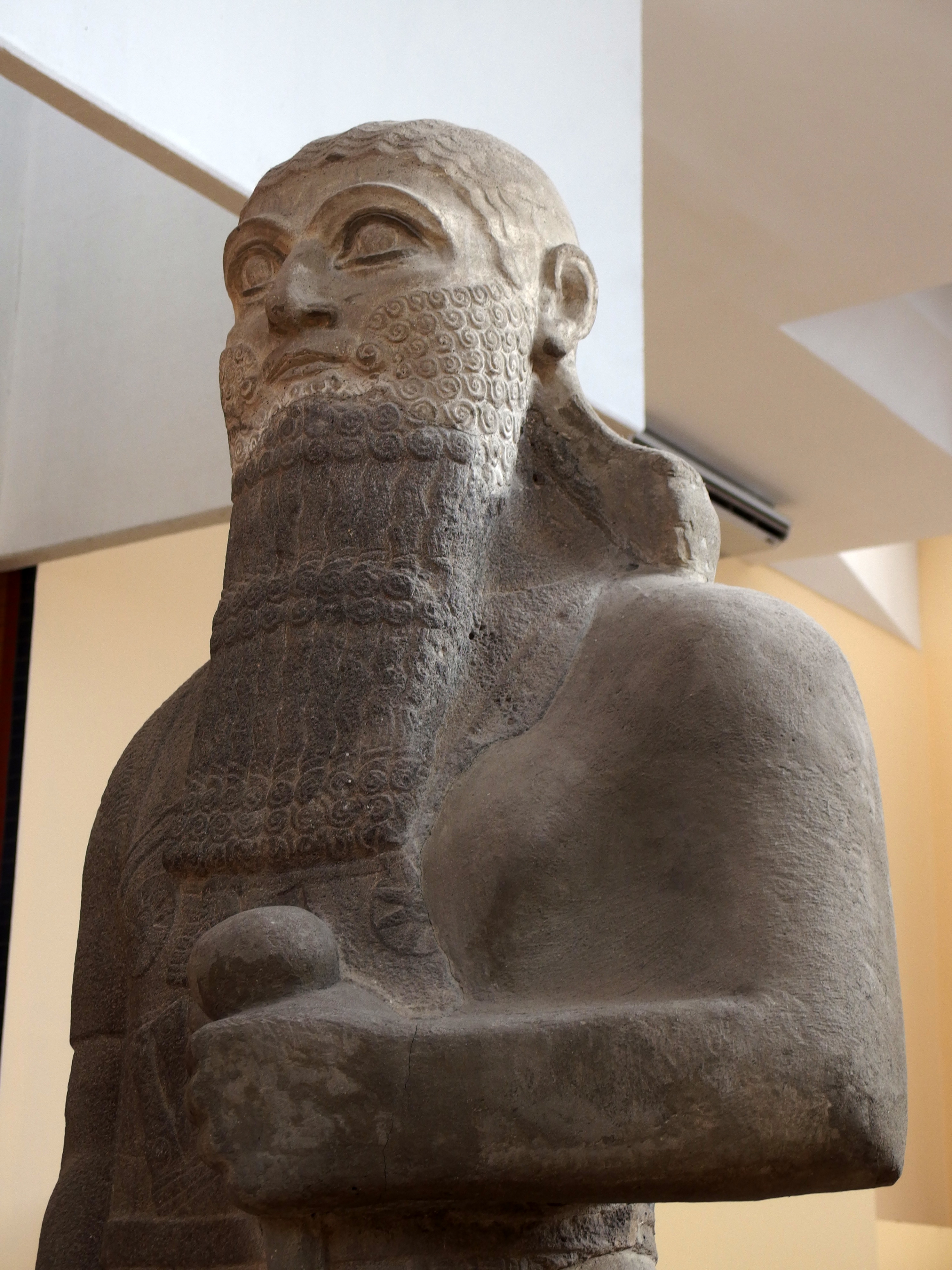King of All Peoples on:
[Wikipedia]
[Google]
[Amazon]
 King of All Peoples (
King of All Peoples (
 King of All Peoples (
King of All Peoples (Akkadian Akkadian or Accadian may refer to:
* Akkadians, inhabitants of the Akkadian Empire
* Akkadian language, an extinct Eastern Semitic language
* Akkadian literature, literature in this language
* Akkadian cuneiform
Cuneiform is a logo-syllabic ...
: ''šar kiššat nišē'') was a rarely attested title of great prestige claimed by some of the kings of Assyria
The king of Assyria (Akkadian: ''Išši'ak Aššur'', later ''šar māt Aššur'') was the ruler of the ancient Mesopotamian kingdom of Assyria, which was founded in the late 21st century BC and fell in the late 7th century BC. For much of its ear ...
. It was one of several ancient Mesopotamian titles explicitly claiming world domination
World domination (also called global domination or world conquest or cosmocracy) is a hypothetical power structure, either achieved or aspired to, in which a single political authority holds the power over all or virtually all the inhabitants ...
,' the others being ''šar kibrāt erbetti'' (King of the Four Corners of the World
King of the Four Corners of the World ( Sumerian: ''lugal-an-ub-da-limmu-ba'', Akkadian: ''šarru kibrat 'arbaim'', ''šar kibrāti arba'i'', or ''šar kibrāt erbetti''), alternatively translated as King of the Four Quarters of the World, King ...
) and ''šar kiššatim'' (King of the Universe
King of the Universe ( Sumerian: '' lugal ki-sár-ra'' or ''lugal kiš-ki'', Akkadian: ''šarru kiššat māti'', ''šar-kiššati'' or ''šar kiššatim''), also interpreted as King of Everything, King of the Totality, King of All or King of th ...
). Unlike these other two titles, which had their origins during the Akkadian Empire
The Akkadian Empire () was the first ancient empire of Mesopotamia after the long-lived civilization of Sumer. It was centered in the city of Akkad () and its surrounding region. The empire united Akkadian and Sumerian speakers under one r ...
~2300 BC and had endured widespread recognition and usage throughout more than a thousand years of Mesopotamian history,' the title of ''šar kiššat nišē'' appears to have been a later Assyrian invention only used by a handful of kings.'
Unlike the other titles of supposed world domination, "king of all peoples" does not refer to a territorial domain, but rather that the Assyrian king was superior to foreign people and that he possessed a legitimate right to govern (all of) them.' It appears in the titularies of the Middle-Assyrian kings Shalmaneser I
Shalmaneser I (𒁹𒀭𒁲𒈠𒉡𒊕 md''sál-ma-nu-SAG'' ''Salmanu-ašared''; 1273–1244 BC or 1265–1235 BC) was a king of Assyria during the Middle Assyrian Empire. Son of Adad-nirari I, he succeeded his father as king in 1265 BC.
Accord ...
and Tukulti-Ninurta I
Tukulti-Ninurta I (meaning: "my trust is in he warrior godNinurta"; reigned 1243–1207 BC) was a king of Assyria during the Middle Assyrian Empire. He is known as the first king to use the title "King of Kings".
Biography
Tukulti-Ninurta I su ...
.'
''Šar kiššat nišē'' was one of several titles used by the Neo-Assyrian
The Neo-Assyrian Empire was the fourth and penultimate stage of ancient Assyrian history and the final and greatest phase of Assyria as an independent state. Beginning with the accession of Adad-nirari II in 911 BC, the Neo-Assyrian Empire grew t ...
king Ashurnasirpal II
Ashur-nasir-pal II ( transliteration: ''Aššur-nāṣir-apli'', meaning " Ashur is guardian of the heir") was king of Assyria from 883 to 859 BC.
Ashurnasirpal II succeeded his father, Tukulti-Ninurta II, in 883 BC. During his reign he embarke ...
, other similar titles and epithets used by him include ''šapir kal nišē'' ("commander of all peoples") and ''ša naphar kiššat nišē ipellu'' ("he who rules all people"). To enforce his right to rule over all peoples, Ashurnasirpal made sure that his new capital of Kalhu
Nimrud (; syr, ܢܢܡܪܕ ar, النمرود) is an ancient Assyrian city located in Iraq, south of the city of Mosul, and south of the village of Selamiyah ( ar, السلامية), in the Nineveh Plains in Upper Mesopotamia. It was a majo ...
had a very distinct multi-ethnic character as the result of moving people from throughout his empire to its location. The title of ''šar kiššat nišē'' was also a frequently used and important title of Ashurnasirpal's successor Shalmaneser III
Shalmaneser III (''Šulmānu-ašarēdu'', "the god Shulmanu is pre-eminent") was king of the Neo-Assyrian Empire from the death of his father Ashurnasirpal II in 859 BC to his own death in 824 BC.
His long reign was a constant series of campaig ...
.'
List of known Kings of All Peoples
*Shalmaneser I
Shalmaneser I (𒁹𒀭𒁲𒈠𒉡𒊕 md''sál-ma-nu-SAG'' ''Salmanu-ašared''; 1273–1244 BC or 1265–1235 BC) was a king of Assyria during the Middle Assyrian Empire. Son of Adad-nirari I, he succeeded his father as king in 1265 BC.
Accord ...
(r. 1263–1234 BC)'
* Tukulti-Ninurta I
Tukulti-Ninurta I (meaning: "my trust is in he warrior godNinurta"; reigned 1243–1207 BC) was a king of Assyria during the Middle Assyrian Empire. He is known as the first king to use the title "King of Kings".
Biography
Tukulti-Ninurta I su ...
(r. 1233–1208 BC)'
* Ashurnasirpal II
Ashur-nasir-pal II ( transliteration: ''Aššur-nāṣir-apli'', meaning " Ashur is guardian of the heir") was king of Assyria from 883 to 859 BC.
Ashurnasirpal II succeeded his father, Tukulti-Ninurta II, in 883 BC. During his reign he embarke ...
(r. 883–859 BC)'
* Shalmaneser III
Shalmaneser III (''Šulmānu-ašarēdu'', "the god Shulmanu is pre-eminent") was king of the Neo-Assyrian Empire from the death of his father Ashurnasirpal II in 859 BC to his own death in 824 BC.
His long reign was a constant series of campaig ...
(r. 859–824 BC)'
References
Citations
Bibliography
* * * * * {{Ancient Mesopotamian royal titles Ancient Mesopotamia Neo-Assyrian Empire